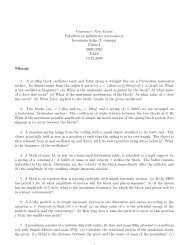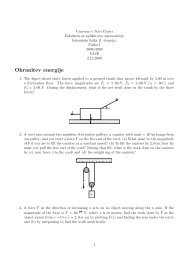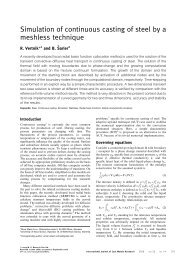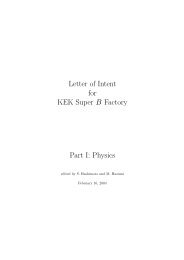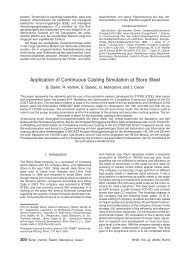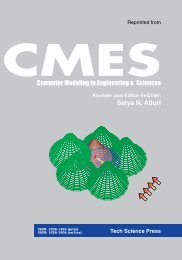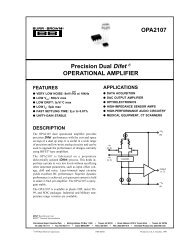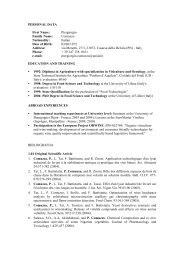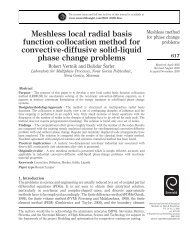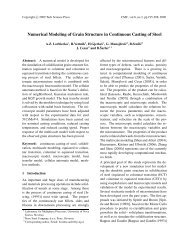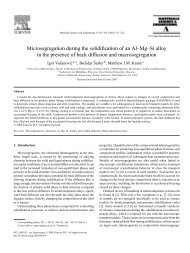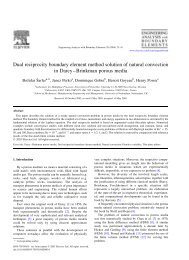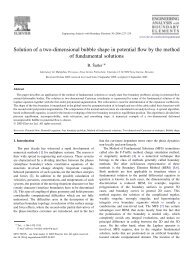Letter of Intent for KEK Super B Factory Part I: Physics
Letter of Intent for KEK Super B Factory Part I: Physics
Letter of Intent for KEK Super B Factory Part I: Physics
Create successful ePaper yourself
Turn your PDF publications into a flip-book with our unique Google optimized e-Paper software.
η<br />
1.5<br />
1<br />
0.5<br />
0<br />
-0.5<br />
-1<br />
excluded area has < 0.05 CL<br />
ε K<br />
|V ub /V cb |<br />
C K M<br />
f i t t e r<br />
LP 2003<br />
Δm d<br />
φ 3<br />
φ 2<br />
Δm s & Δm d<br />
sin 2φ 1 (WA)<br />
-1.5<br />
-1 -0.5 0 0.5 1 1.5 2<br />
Figure 2.2: A fit <strong>of</strong> the parameters (ρ, η) using several experimental constraints as <strong>of</strong> Lepton-<br />
Photon 2003. The plot is taken from the CKM fitter page http://ckmfitter.in2p3.fr/.<br />
§<br />
¤<br />
£ ¡¢¡ ¡¢¡<br />
¤ £<br />
¥¦<br />
¦<br />
¥§<br />
ρ<br />
φ 1<br />
§<br />
ε K<br />
¡¢¡ £<br />
¤<br />
¤<br />
¡¢¡ £<br />
Figure 2.3: Box diagrams to produce the ∆B = 2 four-quark operator<br />
where the ∆B = 2 effective four-quark operator is<br />
¥¦<br />
Q ∆B=2 = dγµ(1 − γ5)b dγµ(1 − γ5)b. (2.12)<br />
The operator is defined at the renormalization scale µb and the corresponding Wilson coefficient<br />
C∆B=2 (µb) is calculated using the renormalization group technique as C∆B=2 (µb) =<br />
[α (5)<br />
s (µb)] −6/23 to leading order. The function S0(m2 t /M 2 W ) is called the Inami-Lim function [8]<br />
and represents the loop effect through the box diagrams.<br />
The ∆B = 1 transitions are described by the following effective Hamiltonian<br />
H ∆B=1<br />
eff<br />
= 4GF<br />
√2 VCKM<br />
<br />
Ci(µb)Oi(µb) + h.c.,<br />
i<br />
where VCKM is the corresponding CKM matrix element. The operators Oi(µb) defined at the<br />
scale µb are listed below, and the couplings Ci(µb) are the Wilson coefficients.<br />
The effective operators representing the tree-level W exchange diagram depicted in Fig. 2.4<br />
are<br />
O q<br />
1 = dα γµ(1 − γ5)q β q β γµ(1 − γ5)b α , q = u, c, (2.13)<br />
O q<br />
2 = dα γµ(1 − γ5)q α q β γµ(1 − γ5)b β , q = u, c. (2.14)<br />
31<br />
¦<br />
¥§



